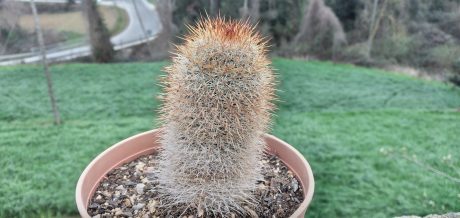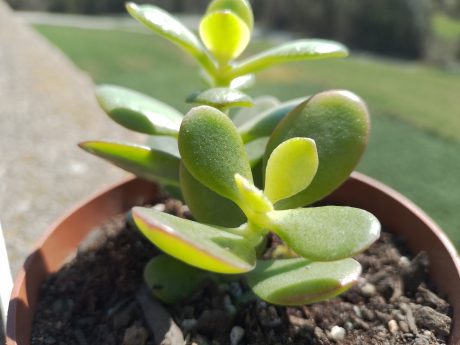Today I present you with one of the most well-known and most cultivated cacti for their appearance and ease of cultivation. It is the Mammillaria Boscana or Bisnaga Boscana, which is known in some regions. It comes from central and northern Mexico. A curious point is that if you go looking for it in its natural habitat, you might not find it, because it grows in volcanic rock areas and in arid and semi-arid areas, hidden under shrubs with limestone substrate and organic poor.
Its shape is spherical at first, as it grows it remains spherical, but it tends to take a cylindrical shape, light green or bluish, although it has a faint cotton ball appearance both because of its shape if you look at it from a distance because it looks like a mountaineer and because its entire surface is covered by silky white pelts.
Do not trust it because of this aspect it has, which may make you want to touch him, because under this white oldness there are the spines, which for a change are those that end up in the form of a hook, as you may want to know. They’re those that if they put you in your clothes or your skin directly, you’re going to have a lot of trouble getting it out, because while you take all the others around you, I can guarantee that they’ll still stick more.
Its normal size is twelve centimeters high by eight in diameter. It has between thirty and fifty white radial spines and between one and seven central spines. The flowers, which grow in funnel form, can be of varying colors: creamy white, cream yellow or pinkish. They leave in the spring and summer forming a crown. The leak is cylindrical, pinkish-red in color about three centimeters long and when summer passes, forms reddish seeds.
To finish, irrigation must be rather scarce, once every fortnight in both spring and summer. In the autumn and winter, stop providing water. An important point is that when the plant is watered, neither the body of the cactus nor the flowers are touched in flowering times, as they can be marked very quickly.
A problem that usually presents itself is that if we overwhelm winter in particular (this can only be applied in areas where irrigation in winter can be applied because minimum temperatures are ten or fifteen degrees positive), it can be inflated and uncontrolled at the time of growth in spring and summer. It supports minimum temperatures below five degrees negative. If it has good illumination throughout the year (outdoor direct light or semi-shadow) always respecting the strongest hours of the day, as it can cause severe burns.
However, we must take into account pests such as red spider, cottony mealybug or root rot.









Reviews
There are no reviews yet.